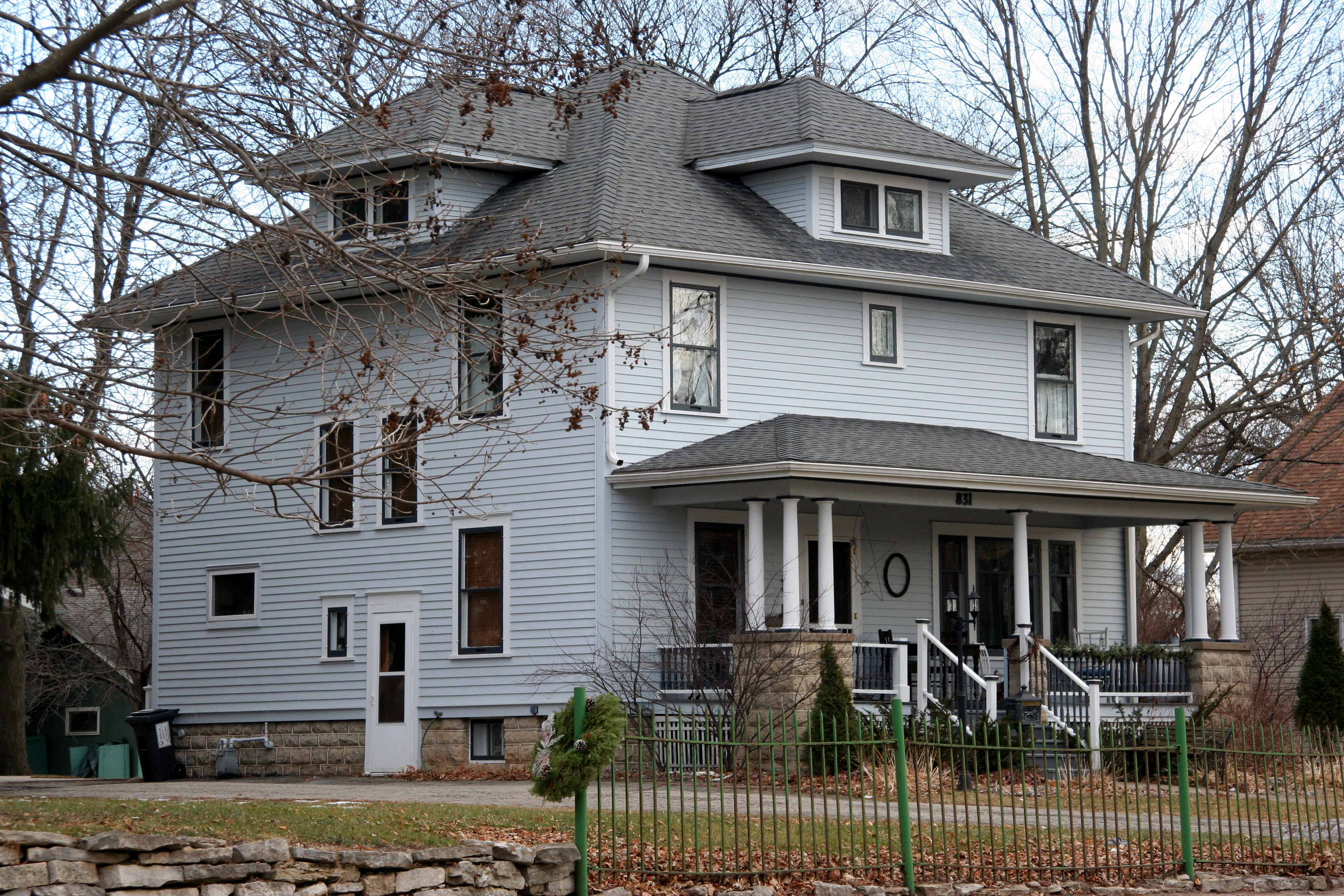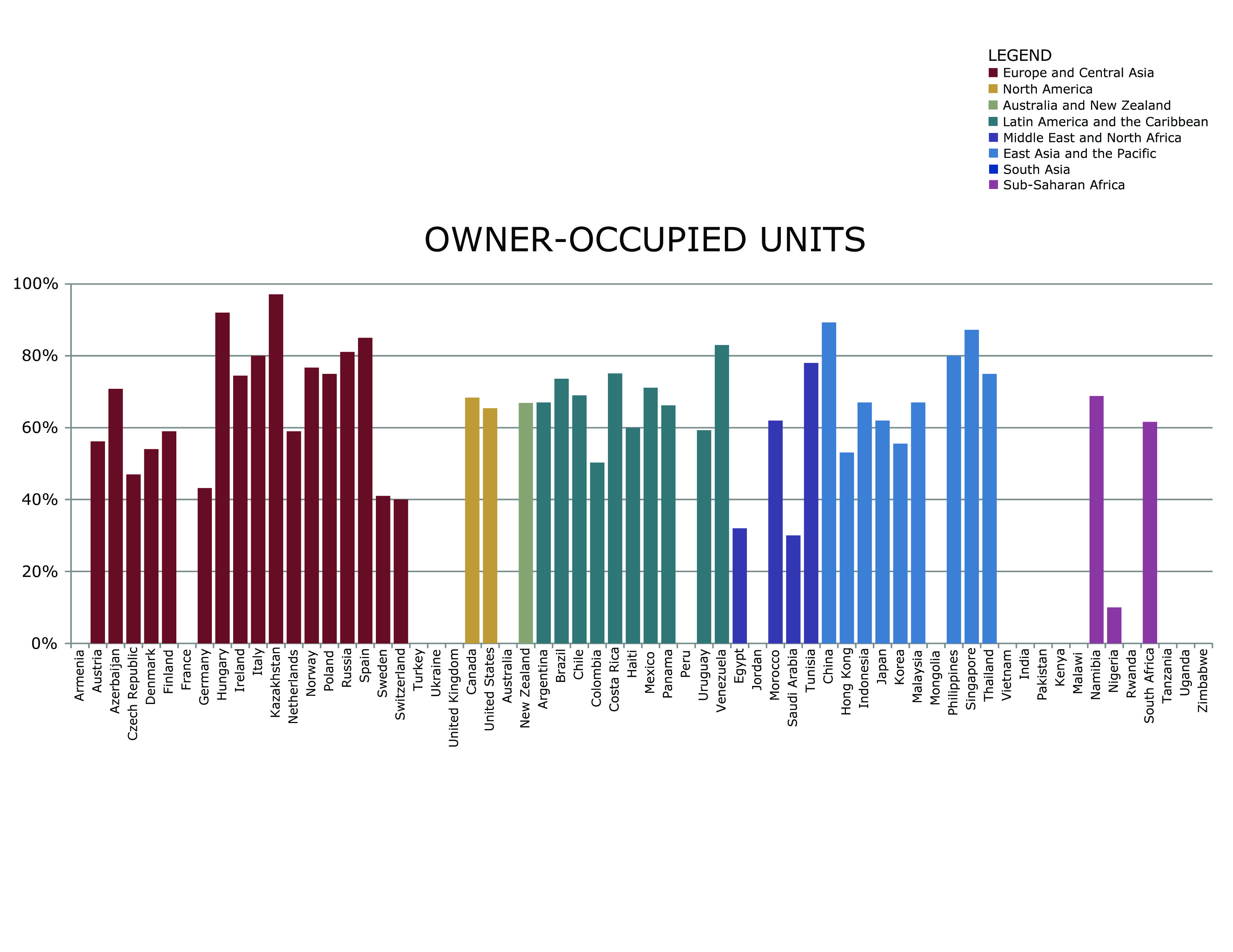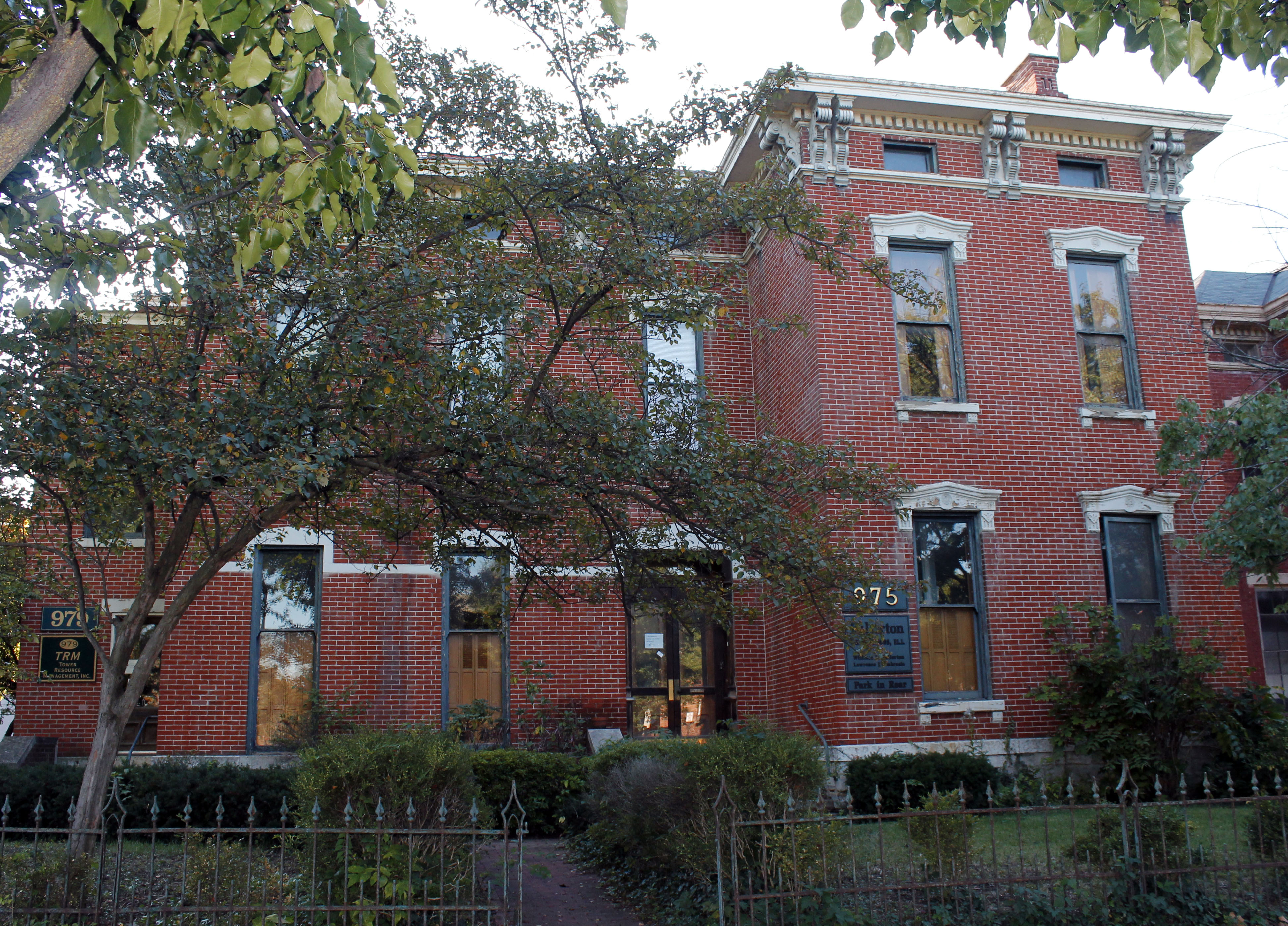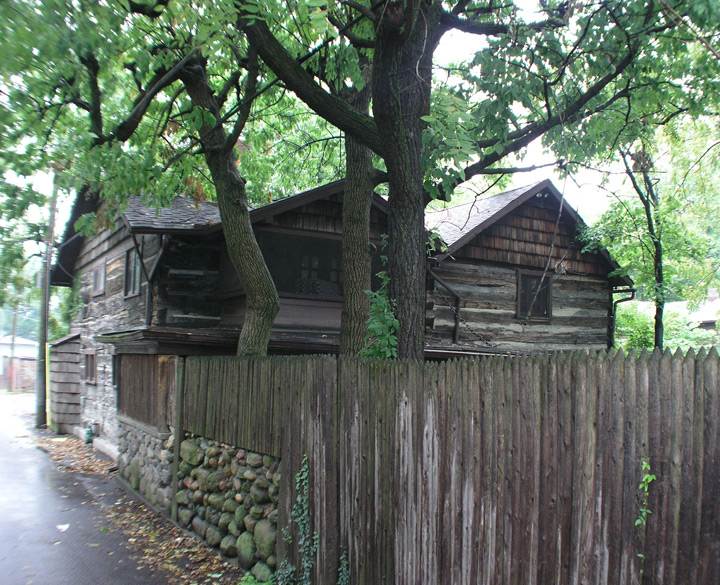|
Northwood Park (Columbus, Ohio)
The Oakland & Northwood Avenue Area (sometimes referred to as Northwood Park) is located in the northern University District in Columbus, Ohio and is bounded by Patterson Avenue to the north and Northwood Avenue to the south & Pearl Alley to the west and Indianola Avenue to the east . It is sometimes considered to go as far north as Blake Ave. The Northwood & Oakland Avenue Area was settled between the early 1900s and the 1940s, making it one of the first subdivisions to be built on the then "outskirts" of the City of Columbus. The homes are traditionally American Four Square with some Classical, Prairie, Colonial, and Craftsman mixed in to create a unique tree lined neighborhood. The neighborhood is known for its strong sense of community, large homes, beautiful gardens and brick alleys. It also has a very high percentage of owner-occupancy. Northwood Park is listed on the Columbus Register of Historic Properties The Columbus Register of Historic Properties is a register ... [...More Info...] [...Related Items...] OR: [Wikipedia] [Google] [Baidu] |
Columbus, Ohio
Columbus () is the state capital and the most populous city in the U.S. state of Ohio. With a 2020 census population of 905,748, it is the 14th-most populous city in the U.S., the second-most populous city in the Midwest, after Chicago, and the third-most populous state capital. Columbus is the county seat of Franklin County; it also extends into Delaware and Fairfield counties. It is the core city of the Columbus metropolitan area, which encompasses 10 counties in central Ohio. The metropolitan area had a population of 2,138,926 in 2020, making it the largest entirely in Ohio and 32nd-largest in the U.S. Columbus originated as numerous Native American settlements on the banks of the Scioto River. Franklinton, now a city neighborhood, was the first European settlement, laid out in 1797. The city was founded in 1812 at the confluence of the Scioto and Olentangy rivers, and laid out to become the state capital. The city was named for Italian explorer Christopher Colum ... [...More Info...] [...Related Items...] OR: [Wikipedia] [Google] [Baidu] |
University District, Columbus, Ohio
The University District (or University Area), is a area located north of Downtown Columbus, Ohio that is home to the main campus of Ohio State University, the Battelle Institute, and Wexner Medical Center. It is generally accepted as the area bounded to the north by Clintonville at Glen Echo Ravine; to the south by the Short North at 5th Avenue; to the west by the Olentangy River and to east by the Conrail railroad tracks. Points of interest include, but are not limited to, the Ohio Stadium and Old North Columbus. The district is Columbus' most densely populated area and contains more than 650 businesses, human service agencies, churches, and schools. University District businesses include boutiques, mixed retail, several tattoo studios, the Gateway Film Center, and a diverse range of restaurants and bars. Neighborhoods The University District comprises many diverse neighborhoods, each with its own unique housing stock and cultural identity. There are a variety of pleasa ... [...More Info...] [...Related Items...] OR: [Wikipedia] [Google] [Baidu] |
American Four Square
The American Foursquare or American Four Square is an American house style popular from the mid-1890s to the late 1930s. A reaction to the ornate and mass-produced elements of the Victorian and other Revival styles popular throughout the last half of the 19th century, the American Foursquare was plain, often incorporating handcrafted "honest" woodwork (unless purchased from a mail-order catalog). This style incorporates elements of the Prairie School and the Craftsman styles. It is also sometimes called Transitional Period. The hallmarks of the style include a basically square, boxy design, two-and-one-half stories high, usually with four large, boxy rooms to a floor (with the exception of the attic floor, which typically has only one or two rooms), a center dormer, and a large front porch with wide stairs. The boxy shape provides a maximum amount of interior room space, to use a small city lot to best advantage. Other common features included a hipped roof, arched entries b ... [...More Info...] [...Related Items...] OR: [Wikipedia] [Google] [Baidu] |
Prairie School
Prairie School is a late 19th- and early 20th-century architectural style, most common in the Midwestern United States. The style is usually marked by horizontal lines, flat or hipped roofs with broad overhanging eaves, windows grouped in horizontal bands, integration with the landscape, solid construction, craftsmanship, and discipline in the use of ornament. Horizontal lines were thought to evoke and relate to the wide, flat, treeless expanses of America's native prairie landscape. The Prairie School was an attempt at developing an indigenous North American style of architecture in sympathys with the ideals and design aesthetics of the Arts and Crafts Movement, with which it shared an embrace of handcrafting and craftsman guilds as an antidote to the dehumanizing effects of mass production. History The Prairie School developed in sympathy with the ideals and design aesthetics of the Arts and Crafts Movement begun in the late 19th century in England by John Rusk ... [...More Info...] [...Related Items...] OR: [Wikipedia] [Google] [Baidu] |
American Craftsman
American Craftsman is an American domestic architectural style, inspired by the Arts and Crafts movement, which included interior design, landscape design, applied arts, and decorative arts, beginning in the last years of the 19th century. Its immediate ancestors in American architecture are the Shingle style, which began the move away from Victorian ornamentation toward simpler forms; and the Prairie style of Frank Lloyd Wright. The name "Craftsman" was appropriated from furniture-maker Gustav Stickley, whose magazine ''The Craftsman'' was first published in 1901. The architectural style was most widely used in small-to-medium-sized Southern California single-family homes from about 1905, so that the smaller-scale Craftsman style became known alternatively as " California bungalow". The style remained popular into the 1930s, and has continued with revival and restoration projects through present times. Influences The American Craftsman style was a 20th century American ... [...More Info...] [...Related Items...] OR: [Wikipedia] [Google] [Baidu] |
Owner-occupancy
Owner-occupancy or home-ownership is a form of housing tenure in which a person, called the owner-occupier, owner-occupant, or home owner, owns the home in which they live. The home can be a house, such as a single-family house, an apartment, condominium, or a housing cooperative. In addition to providing housing, owner-occupancy also functions as a real estate investment. Acquisition Some homes are constructed by the owners with the intent to occupy. Many are inherited. A large number are purchased, as new homes from a real estate developer or as an existing home from a previous landlord or owner-occupier. A house is usually the most expensive single purchase an individual or family makes, and often costs several times the annual household income. Given the high cost, most individuals do not have enough savings on hand to pay the entire amount outright. In developed countries, mortgage loans are available from financial institutions in return for interest. If the home ... [...More Info...] [...Related Items...] OR: [Wikipedia] [Google] [Baidu] |
Columbus Register Of Historic Properties
The Columbus Register of Historic Properties is a register for historic buildings and other sites in Columbus, Ohio, Columbus, Ohio, United States. The register is maintained by the City of Columbus Historic Resources Commission and Historic Preservation Office, and was established in 1980. Many of these landmarks are also listed on the National Register of Historic Places listings in Columbus, Ohio, National Register of Historic Places, providing federal tax support for preservation, and some are further designated National Historic Landmarks, providing additional federal oversight. The Columbus Register includes 82 entries, including 54 on the National Register. Two of the city's three National Historic Landmarks are on the register: the Ohio Statehouse and Captain Edward V. Rickenbacker House, but not the Ohio Theatre (Columbus, Ohio), Ohio Theatre. The city also maintains four historic districts not listed on its register: German Village, Italian Village, Victorian Village, ... [...More Info...] [...Related Items...] OR: [Wikipedia] [Google] [Baidu] |
Neighborhoods In Columbus, Ohio
Columbus, the state capital and Ohio's largest city, has numerous neighborhoods within its city limits. Neighborhood names and boundaries are not officially defined. They may vary or change from time to time due to demographic and economic variables. Areas of concentration Columbus's African American population is largely concentrated in neighborhoods northeast and southeast of Downtown Columbus, as well as areas immediately west and east of Downtown, such as Franklinton and the Near East. Native-born whites and assimilated ethnic Europeans are dispersed throughout the city, with higher concentrations in neighborhoods in the western half of Columbus, and areas immediately south and north of Downtown. Columbus has a growing immigrant population of Hispanics, Asians and Asian Americans, and Africans. In the far west side of Columbus, especially in the Hilltop, there is a notable and diverse Hispanic population, with people of Mexican descent being the largest of Hispanic groups. The ... [...More Info...] [...Related Items...] OR: [Wikipedia] [Google] [Baidu] |
University District (Columbus, Ohio)
The University District (or University Area), is a area located north of Downtown Columbus, Ohio that is home to the main campus of Ohio State University, the Battelle Institute, and Wexner Medical Center. It is generally accepted as the area bounded to the north by Clintonville at Glen Echo Ravine; to the south by the Short North at 5th Avenue; to the west by the Olentangy River and to east by the Conrail railroad tracks. Points of interest include, but are not limited to, the Ohio Stadium and Old North Columbus. The district is Columbus' most densely populated area and contains more than 650 businesses, human service agencies, churches, and schools. University District businesses include boutiques, mixed retail, several tattoo studios, the Gateway Film Center, and a diverse range of restaurants and bars. Neighborhoods The University District comprises many diverse neighborhoods, each with its own unique housing stock and cultural identity. There are a variety of pleasant ... [...More Info...] [...Related Items...] OR: [Wikipedia] [Google] [Baidu] |
Columbus Register Properties
Columbus is a Latinized version of the Italian surname "''Colombo''". It most commonly refers to: * Christopher Columbus (1451-1506), the Italian explorer * Columbus, Ohio, capital of the U.S. state of Ohio Columbus may also refer to: Places Extraterrestrial * Columbus (crater), a crater on Mars * ''Columbus'' (ISS module), the European module for the International Space Station * ''Columbus'' (spacecraft), a program to develop a European space station 1986–1991 Italy * Columbus (Rome), a residential district United States * Columbus, Arkansas * Columbus, Georgia * Columbus, Illinois * Columbus, Indiana, known for modern architecture * Columbus, Kansas * Columbus, Kentucky * Columbus, Minnesota * Columbus, Mississippi * Columbus, Missouri * Columbus, Montana * Columbus, Nebraska * Columbus, New Jersey * Columbus, New Mexico * Columbus, New York * Columbus, North Carolina * Columbus, North Dakota * Columbus, Ohio, the largest city in United States with this name * Columbus ... [...More Info...] [...Related Items...] OR: [Wikipedia] [Google] [Baidu] |






.png)
